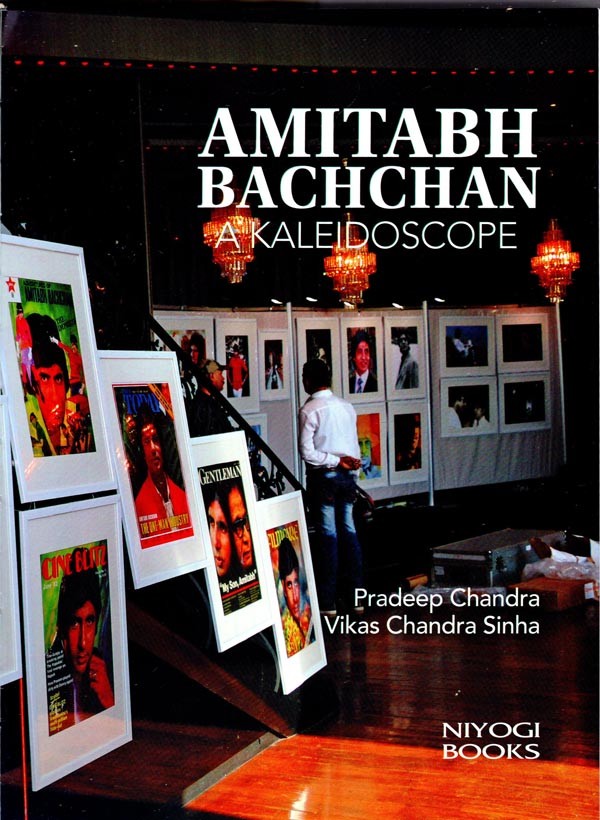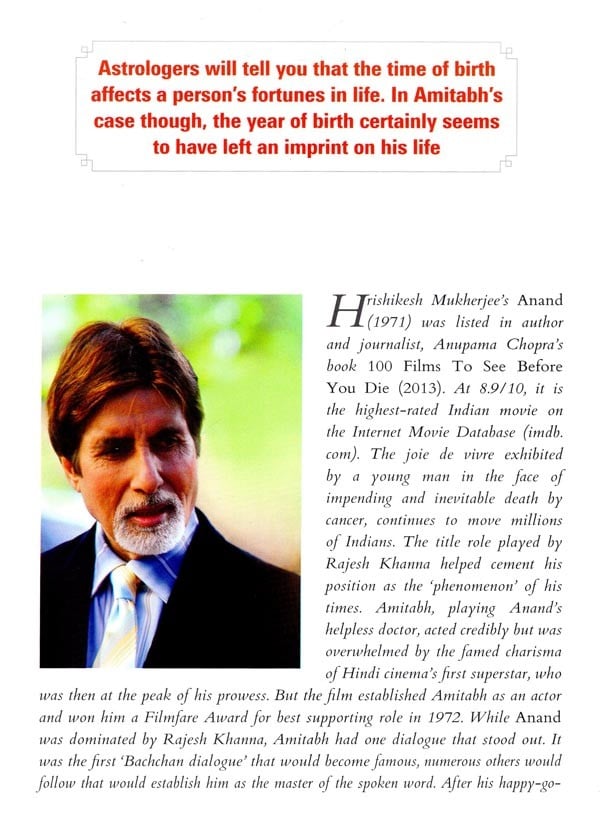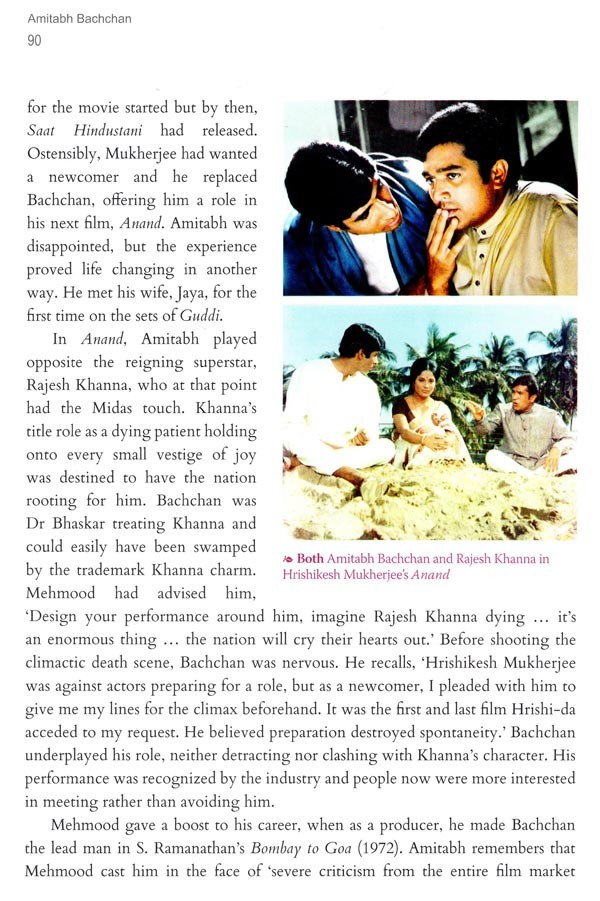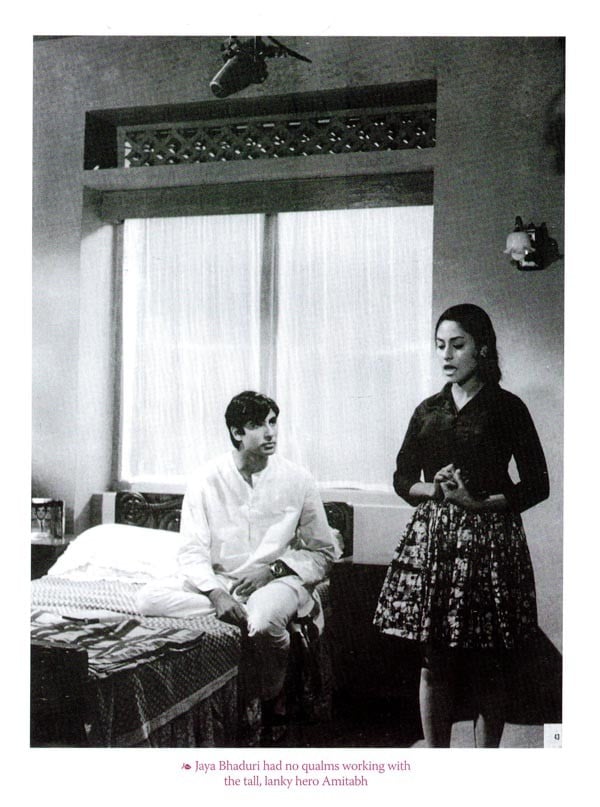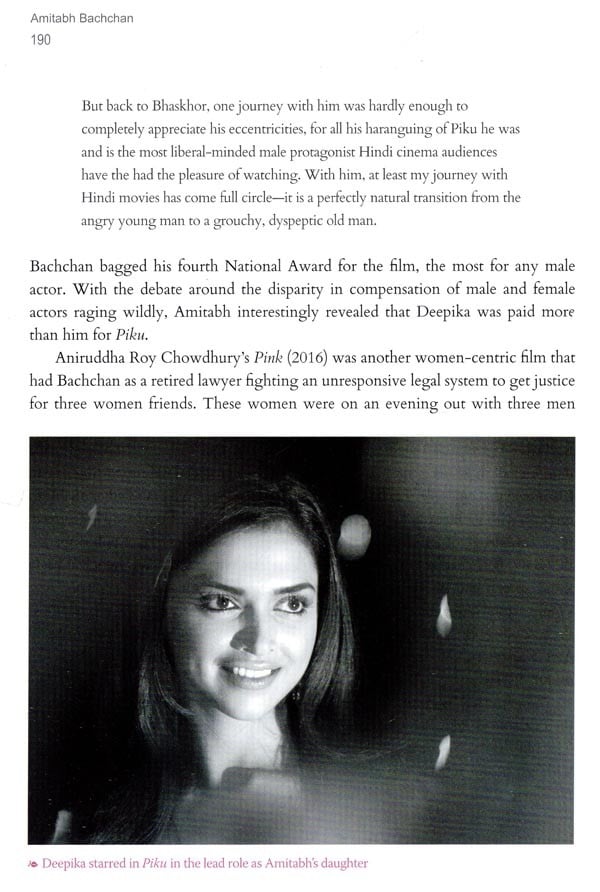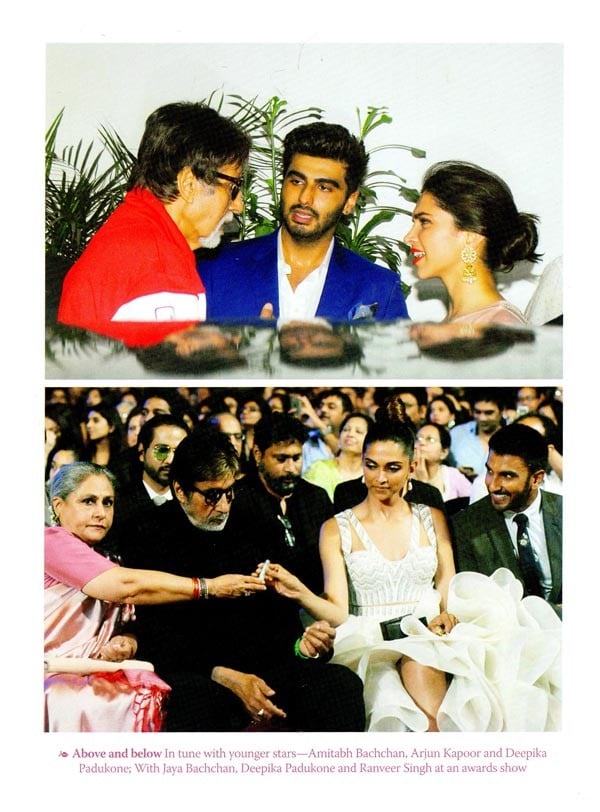
Amitabh Bachchan- A Kaleidoscope
Book Specification
| Item Code: | AZE067 |
| Author: | Pradeep Chandra and Vikas Chandra Sinha |
| Publisher: | NIYOGI BOOKS |
| Language: | ENGLISH |
| Edition: | 2019 |
| ISBN: | 9789386906946 |
| Pages: | 408 (Throughout B/w and Color Illustrations) |
| Cover: | HARDCOVER |
| Weight | 1.31 kg |
Book Description
Amitabh Bachchan. The name itself is enough to make anyone sit up and take notice. A name that has become synonymous with Indian cinema. One of the finest actors of our times and a demigod to many, Amitabh Bachchan, or Big B as he is fondly called by his fans, has had an indelible impact on the big screen as well as the small.
As an actor, Bachchan's career spans over an astounding five decades, having essayed myriad characters and having worked with some of the biggest names in the film industry. No words, no adjectives, no superlatives would ever be enough to sum up the complete oeuvre of Amitabh Bachchan the actor.
In Amitabh Bachchan: A Kaleidoscope, Pradeep Chandra and Vikas Chandra Sinha have embarked on the near-impossible task of chronicling the course of Amitabh Bachchan's life, from his early days till date. Filled with personal anecdotes from the man himself; quotes from his immediate family, closest friends and colleagues who have been witness to his rise to megastardom as well as his plummet; a collection of rare and never-seen before photographs, paintings, sketches and movie stills, the book is a must-read for every Bachchan fan as well as every art and cinema aficionado. The book also gives a bird's-eye view of the many facets of Bachchan-the actor, the struggler, the family man, the businessman, the politician, the activist and above all, the fighter.
Pradeep Chandra has been a photographer, writer and painter in a career stretching over four decades. As a photojournalist, he has been associated with the prestigious. The Illustrated Weekly of India. The Times of India. The Indian Express, The Week, Sunday Observer, Bombay Times. He has held many exhibitions that display his unique approach to photography. Some of his memorable shows include: 'The Alien Insiders', his documentation of the plight of Kashmiri Pandit refugees: "Britain', a celebration of 50 years of Indian Independence; 'Haveli Dreams', on the havelis of Rajasthan; a tribute to Mumbai's Taj Mahal Hotel after the catastrophic 26/11 attack. He has also commemorated Amitabh Bachchan's 61st and 75th birthdays by curating two multimedia exhibitions in collaboration with other artists. His most recent show was 'Frames 75, which had 75 exhibits celebrating the career of Amitabh Bachchan in his 75th year. He has authored coffee-table books on Amitabh Bachchan. M.F. Husain and Aamir Khan. He lives in Mumbai and is currently working on a book on Pritish Nandy and J.P. Singhal, among other projects.
Vikas Chandra Sinha is at first-time author and a lifelong Bachchan fan. He works in the corporate sector and has studied at IIT. Delhi and IIM, Ahmedabad. He has worked. with some of the biggest corporate houses in India: Maruti Suzuki, Tata Group and is currently with the Mahindra Group. A student of history, art and films, Amitabh Bachchan A Kaleidoscope was an opportunity for him to relive the Bachchan myth, along with a fellow art and film aficionado. He lives in Mumbai with his wife and two daughters.
Indian cinema's flight of imagination encompasses the unthinkable. A madcap sequence from Manmohan Desai's magnum opus Amar Akbar Anthony, featuring Bachchan in the now-immortal character of Anthony, has the three lead actors donate blood via three tubes directly to their critically injured screen mother. While the scientists and the doctors tore their hair in exasperation, audiences in the dark of the theatres cried their hearts out. The story of the movie encapsulated what critics have called the worst trait of Indian cinema its formulaic nature. Manmohan Desai's version of the 'lost and found formula-in vogue since Ashok Kumar's houry pre Independence blockbuster Kismet inaugurated it-had three brothers separated in childhood, being brought up as a Hindu, Muslim and Christian respectively, and who come together in adulthood to take on the villains who had ruined their parents life. Their act of donating blood simultaneously to their long-lost but lately reunited mother, was metaphorically interpreted as the willingness of the various communities of our diverse motherland to sacrifice for their country. Audiences across the country, including educated ones, did not balk at the scientific impossibility, they instead soaked up the metaphor.
Most students of Indian cinema agree that it is heavily indebted to the epi tradition of India. One of the leading scholars of Asian cinema. Wimal Dissanayake. in his essay, 'Rethinking Indian popular cinema', writes that the influence of the two epics, Ramayana and Mahabharata, stretch across the 'thematics, narrativity, ideology and communication of Indian cinema (2003: 205). Growing up, children in India are taught the epics in the form of short episodes, each designed to illustrate some fact of life. The full story dawns on most of us pretty late in life. Most are, thus, trained to look at the epics metaphorically, and not literally. Emotional connect and symbolisms matter more in understanding the epics than mere twists and turns of the story itself. And this translates into our attitude to popular cinema.
Cinema is a director's medium-the director nurtures the movie like a mother does, as the Showman of Hindi cinema, Raj Kapoor, used to say. But there is another side to it. Examining the phenomenon of Hindi cinema, Vijay Mishra, in the essay 'The Actor as Parallel Text: Amitabh Bachchan', writes, 'popular cinema in India, perhaps even more so than in Hollywood, became the cinema of the star rather than the cinema of the director or the studio' (2001: 126). This is perhaps because of the fact that it is the star that ends up embodying the dreams of society and gets linked in the average cine-goer's mind with his or her aspirations. Tamil cinema, for example, which has been inextricably linked with the political movement for social justice, is an illustration of this fact. M.G. Ramachandran, M.G.R. to the world, achieved demigod status through the many roles he played. in which he was the underdog fighting for a better society. Such was his following that he unobtrusively slipped into the role of a political champion in real life, thus becoming the chief minister of the state of Tamil Nadu. He was never electorally defeated and was awarded the Bharat Ratna, the nation's highest honour, for his stellar contribution in uplifting the Tamil people. M.G.R., the 'Puratchi Thalaivar or revolutionary leader had become the metaphor for an average Tamil's pride and struggle for a better tomorrow.
